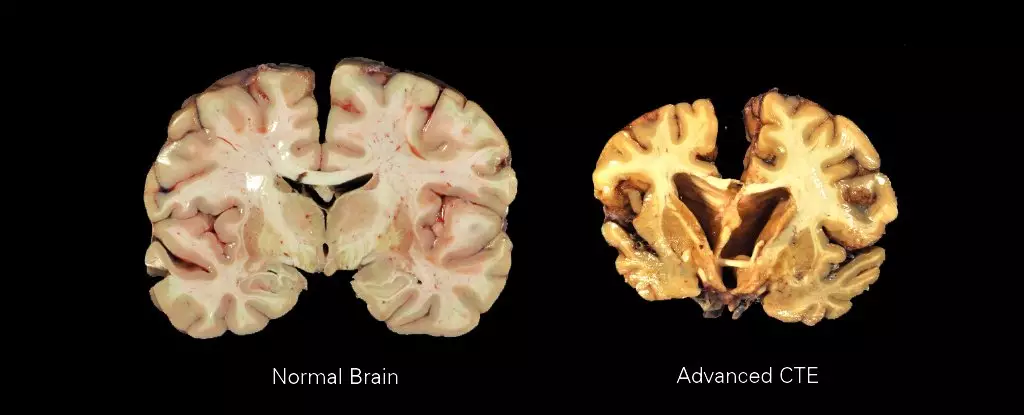A recent study has unveiled a distressing revelation: for every year of rugby played, the risk of developing chronic traumatic encephalopathy (CTE) significantly increases. CTE is a debilitating brain disease that is believed to result from repeated head injuries, causing the brain to collide with the skull and damage its tissues. Although the diagnosis of CTE can only be made post-mortem, the symptoms typically surface later in life and include memory problems, mood changes, depression, and dementia. Shockingly, individuals as young as 17 have been diagnosed with this condition. The study examined the brains of 31 former rugby union players who donated their brains to research, where approximately two-thirds (68%) were found to have CTE. This alarming diagnosis was prevalent among both amateur and elite players. The study also revealed that the duration of a player’s rugby career was directly linked to the risk of developing CTE, with each additional year of play increasing the risk by 14 percent.
Dr. Ann McKee, a neuropathologist at the Boston University CTE Center and one of the authors of the study, stresses that CTE is a preventable disease. Urgent measures are needed not only to reduce the number of head impacts but also to minimize their intensity within rugby, as well as other contact sports. The goal is to protect players and prevent them from falling victim to CTE. This study, despite its small sample size, contributes to the mounting evidence that portrays a grim reality for those participating in contact sports. CTE does not discriminate; it affects amateur players, professional athletes, females, and males alike, after years of arduous matches and intense training.
While the majority of evidence regarding head injuries and CTE risk comes from studies conducted on NFL players, the results from studies encompassing soccer, Australian rules football (AFL), and now rugby players, are equally alarming. Unlike other contact sports, rugby union has been associated with a particularly high risk of concussions. Surprisingly, only a few cases of CTE have been reported in former rugby players to date. However, this study introduces brain pathology even among those who played amateur rugby, highlighting the prevalence of CTE in the sport. Nevertheless, the researchers emphasize that the strongest evidence linking contact sports to neurodegeneration still stems from professional or elite players.
As the evidence continues to mount, it is becoming clear that the most significant risk factor for developing CTE is repetitive head trauma, regardless of concussions. Mild head injuries can have long-term consequences, including memory problems and cognitive deficits. A groundbreaking study published in June, which examined the brains of 631 deceased football players, revealed that the chances of developing CTE in NFL players were related to both the frequency and severity of head impacts, as well as the length of their careers, independent of the number of concussions sustained. This discovery implies that changes in training and play methodologies within football could potentially reduce the risk of CTE.
The findings of this study should serve as a wake-up call for the rugby community and all those involved in contact sports. Protecting the well-being of athletes should be of the utmost importance, necessitating immediate action to mitigate the risk of CTE. Stricter regulations, improved safety equipment, and changes in training methodologies are essential to safeguard players from the long-term consequences of repetitive head traumas. Collaboration between researchers, health professionals, and sports organizations is crucial to developing effective strategies and implementing preventive measures. Only through proactive measures can we ensure that the next generation of athletes can partake in contact sports without facing the devastating consequences of CTE.


Leave a Reply